3 Reasons for Major Drop-Offs in Medical Forms.
3 Reasons for Major Drop-Offs in Medical Forms.
3 Reasons for Major Drop-Offs in Medical Forms.
No matter which healthcare form we pick, there are major drop-off reasons. We shall dive into the top 3 and learn how to resolve them in your next form.
No matter which healthcare form we pick, there are major drop-off reasons. We shall dive into the top 3 and learn how to resolve them in your next form.
No matter which healthcare form we pick, there are major drop-off reasons. We shall dive into the top 3 and learn how to resolve them in your next form.
Healthcare forms or medical forms can sometimes be long and boring, which is a major reason why people drop off in between. As a healthcare provider, you want to capture the maximum possible information quickly. Today, let’s look at why people drop out of healthcare forms and what can be done to solve these issues. We’ll go beyond the obvious - limit questions to essential ones, avoid jargon, and make it multi-device compatible.
Your Medical Form Is Not Patient-Friendly.
Is your healthcare form suited for differently abled people? As a healthcare service provider, it is necessary to make forms that people with disabilities and physical limitations can also access. Like Paperform, where you can integrate a normal form with text-to-speech PRO via Zapier for people to hear the questions if they cannot read. Here comes the type of multi-modal input wherein a patient can type, share files, upload images, and send voice clips.

Moreover, if you can experiment with a voice chatbot versus a form, it could be a big revelation for completion rates in both these data collection tools. In addition to this, use survey forms to find out where your patients live and which language they speak. The healthcare form not being in the relevant language(s) could be a blocker for a user segment, especially when you’re collecting detailed data in a medical history form.
HIPAA and Ethical Compliance Not Stated.
One of the reasons why people shy away from sharing data is that they are unsure if their data will stay confidential. Hence, it is crucial to tell them about HIPAA in advance via the website header/footer or mention it in the form about HIPAA. Only when they trust you will patients open up and sign up for patient intake forms and share details in the medical history forms.

In the case of a mental health intake form, how you ask for sensitive information and what you do with it is even more important. That’s because patients are very careful of revealing data points that mental healthcare forms ask for - substance use, libido, coping mechanisms, psychiatric diagnosis, and more. Hence, indicate HIPAA compliance and be transparent if you share data, to whom, and under what circumstances.
You’re Not Resolving Patient’s Doubts.
Patient support could be of two types: about the form (how long it is, can I skip a section, technical bug) or any other issue (healthcare provider’s credibility, doctor timing, or insurance usage). The doubts related to the form, like how to upload a digital signature in a patient intake form, can be addressed in neatly defined sections, pages, screen popups, and placeholders for questions. You can set up a virtual bot or in-call help for doubts related to other issues, like how many details to share in medical history forms. Do not let patients’ queries be a barrier to them filling out healthcare forms.
The Next Steps to Create Medical Forms.
Implementing these changes can transform your healthcare forms and optimize them for higher conversion rates. Remember that the healthcare forms must be device-friendly, show a progress bar, have easier navigation between sections, and be visually appealing. Once the foundation is set, invest in our shared points: accessibility for all, HIPAA, ethical compliance, and support and assistance. Read it here to go deeper into the foundational elements of a form that lead to higher conversion rates.
Healthcare forms or medical forms can sometimes be long and boring, which is a major reason why people drop off in between. As a healthcare provider, you want to capture the maximum possible information quickly. Today, let’s look at why people drop out of healthcare forms and what can be done to solve these issues. We’ll go beyond the obvious - limit questions to essential ones, avoid jargon, and make it multi-device compatible.
Your Medical Form Is Not Patient-Friendly.
Is your healthcare form suited for differently abled people? As a healthcare service provider, it is necessary to make forms that people with disabilities and physical limitations can also access. Like Paperform, where you can integrate a normal form with text-to-speech PRO via Zapier for people to hear the questions if they cannot read. Here comes the type of multi-modal input wherein a patient can type, share files, upload images, and send voice clips.

Moreover, if you can experiment with a voice chatbot versus a form, it could be a big revelation for completion rates in both these data collection tools. In addition to this, use survey forms to find out where your patients live and which language they speak. The healthcare form not being in the relevant language(s) could be a blocker for a user segment, especially when you’re collecting detailed data in a medical history form.
HIPAA and Ethical Compliance Not Stated.
One of the reasons why people shy away from sharing data is that they are unsure if their data will stay confidential. Hence, it is crucial to tell them about HIPAA in advance via the website header/footer or mention it in the form about HIPAA. Only when they trust you will patients open up and sign up for patient intake forms and share details in the medical history forms.

In the case of a mental health intake form, how you ask for sensitive information and what you do with it is even more important. That’s because patients are very careful of revealing data points that mental healthcare forms ask for - substance use, libido, coping mechanisms, psychiatric diagnosis, and more. Hence, indicate HIPAA compliance and be transparent if you share data, to whom, and under what circumstances.
You’re Not Resolving Patient’s Doubts.
Patient support could be of two types: about the form (how long it is, can I skip a section, technical bug) or any other issue (healthcare provider’s credibility, doctor timing, or insurance usage). The doubts related to the form, like how to upload a digital signature in a patient intake form, can be addressed in neatly defined sections, pages, screen popups, and placeholders for questions. You can set up a virtual bot or in-call help for doubts related to other issues, like how many details to share in medical history forms. Do not let patients’ queries be a barrier to them filling out healthcare forms.
The Next Steps to Create Medical Forms.
Implementing these changes can transform your healthcare forms and optimize them for higher conversion rates. Remember that the healthcare forms must be device-friendly, show a progress bar, have easier navigation between sections, and be visually appealing. Once the foundation is set, invest in our shared points: accessibility for all, HIPAA, ethical compliance, and support and assistance. Read it here to go deeper into the foundational elements of a form that lead to higher conversion rates.
Healthcare forms or medical forms can sometimes be long and boring, which is a major reason why people drop off in between. As a healthcare provider, you want to capture the maximum possible information quickly. Today, let’s look at why people drop out of healthcare forms and what can be done to solve these issues. We’ll go beyond the obvious - limit questions to essential ones, avoid jargon, and make it multi-device compatible.
Your Medical Form Is Not Patient-Friendly.
Is your healthcare form suited for differently abled people? As a healthcare service provider, it is necessary to make forms that people with disabilities and physical limitations can also access. Like Paperform, where you can integrate a normal form with text-to-speech PRO via Zapier for people to hear the questions if they cannot read. Here comes the type of multi-modal input wherein a patient can type, share files, upload images, and send voice clips.

Moreover, if you can experiment with a voice chatbot versus a form, it could be a big revelation for completion rates in both these data collection tools. In addition to this, use survey forms to find out where your patients live and which language they speak. The healthcare form not being in the relevant language(s) could be a blocker for a user segment, especially when you’re collecting detailed data in a medical history form.
HIPAA and Ethical Compliance Not Stated.
One of the reasons why people shy away from sharing data is that they are unsure if their data will stay confidential. Hence, it is crucial to tell them about HIPAA in advance via the website header/footer or mention it in the form about HIPAA. Only when they trust you will patients open up and sign up for patient intake forms and share details in the medical history forms.

In the case of a mental health intake form, how you ask for sensitive information and what you do with it is even more important. That’s because patients are very careful of revealing data points that mental healthcare forms ask for - substance use, libido, coping mechanisms, psychiatric diagnosis, and more. Hence, indicate HIPAA compliance and be transparent if you share data, to whom, and under what circumstances.
You’re Not Resolving Patient’s Doubts.
Patient support could be of two types: about the form (how long it is, can I skip a section, technical bug) or any other issue (healthcare provider’s credibility, doctor timing, or insurance usage). The doubts related to the form, like how to upload a digital signature in a patient intake form, can be addressed in neatly defined sections, pages, screen popups, and placeholders for questions. You can set up a virtual bot or in-call help for doubts related to other issues, like how many details to share in medical history forms. Do not let patients’ queries be a barrier to them filling out healthcare forms.
The Next Steps to Create Medical Forms.
Implementing these changes can transform your healthcare forms and optimize them for higher conversion rates. Remember that the healthcare forms must be device-friendly, show a progress bar, have easier navigation between sections, and be visually appealing. Once the foundation is set, invest in our shared points: accessibility for all, HIPAA, ethical compliance, and support and assistance. Read it here to go deeper into the foundational elements of a form that lead to higher conversion rates.
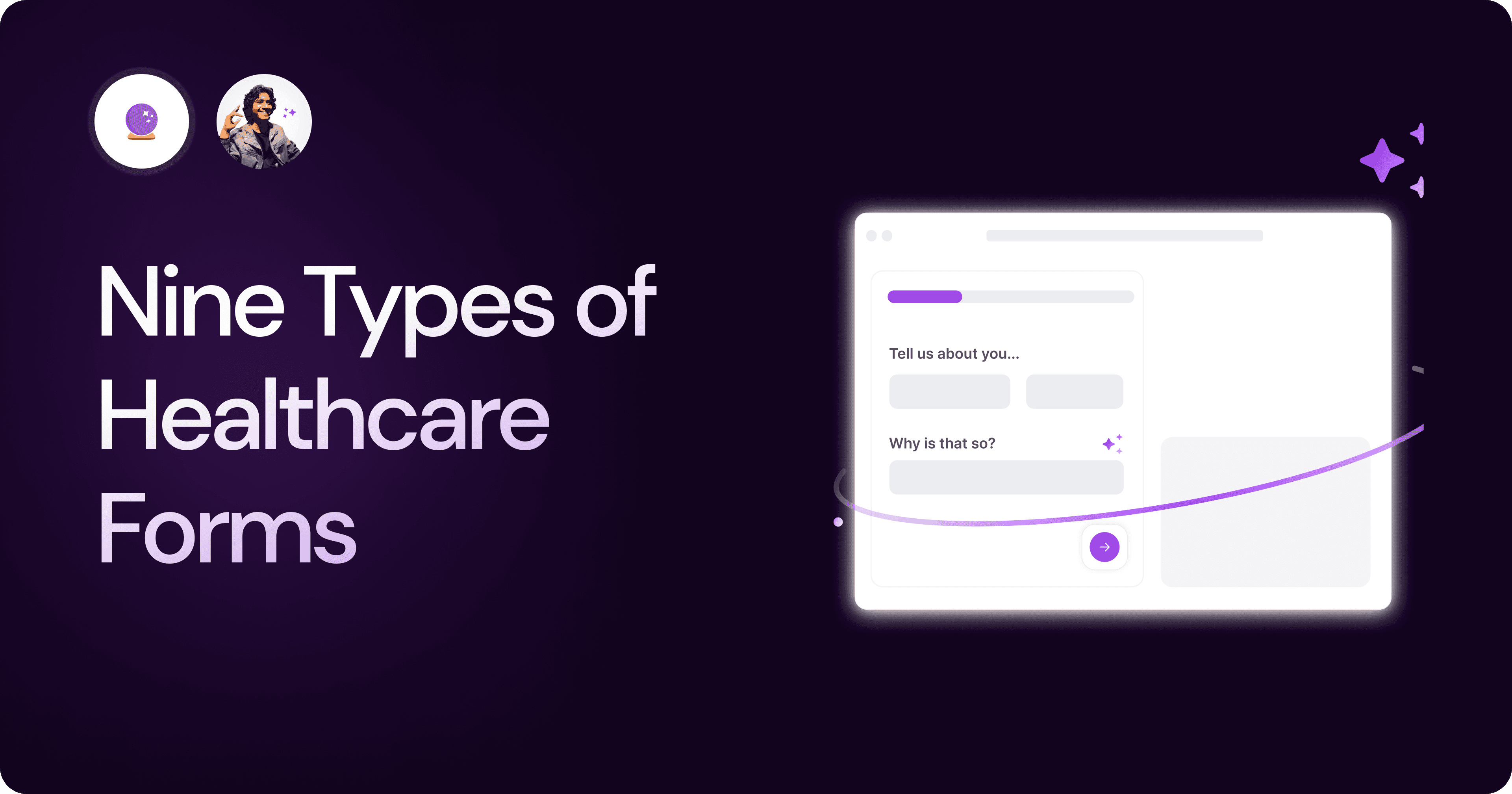
Nine Types of Healthcare and Medical Forms.
Medical forms are a must-have for any healthcare business or practitioner. Learn about the different kinds of medical and healthcare forms.
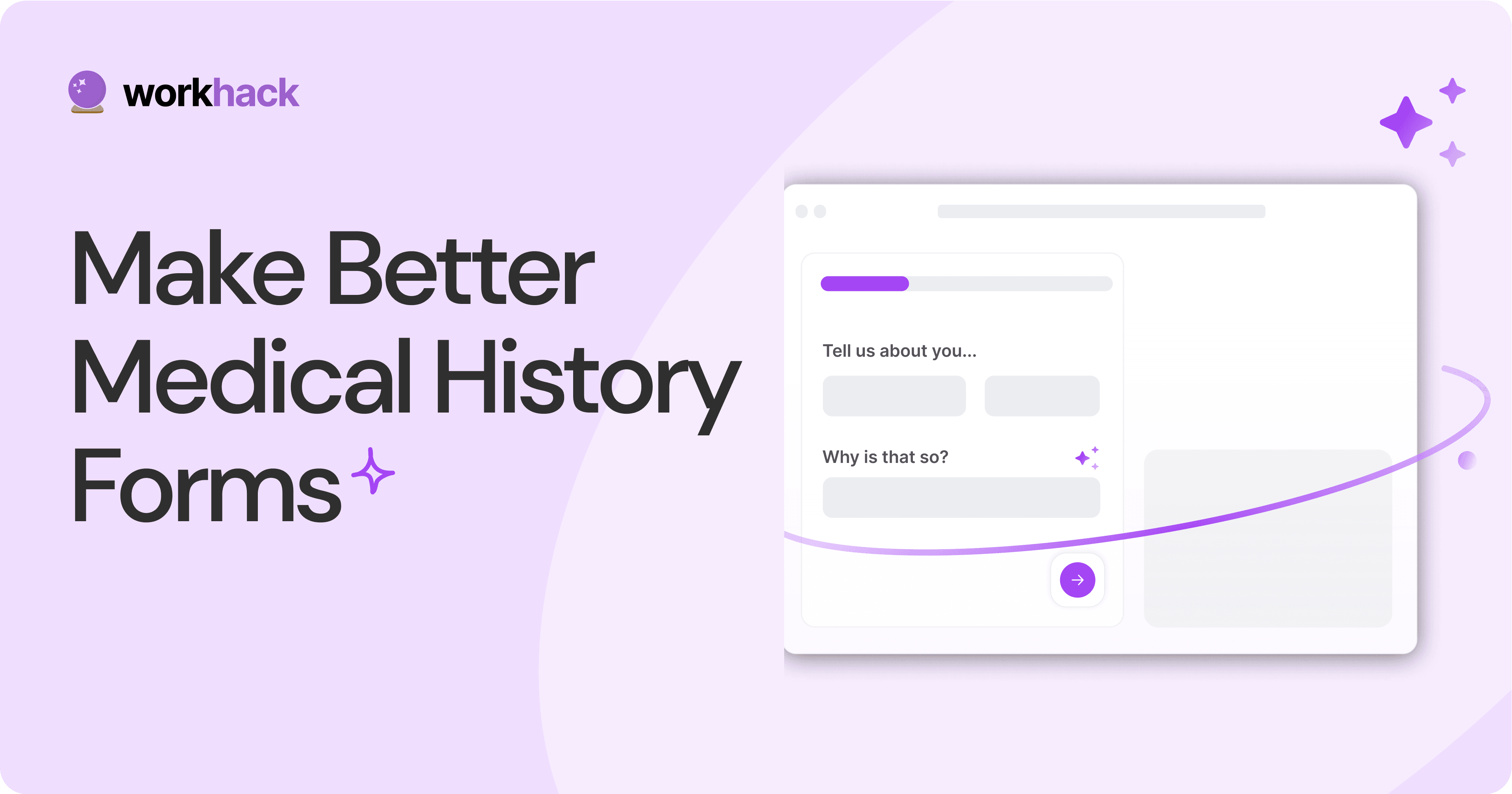
4 Tips for Better Medical History Forms.
Medical history forms are central to patient care, onboarding, and medical administration records. Learn how to make them easier to fill.
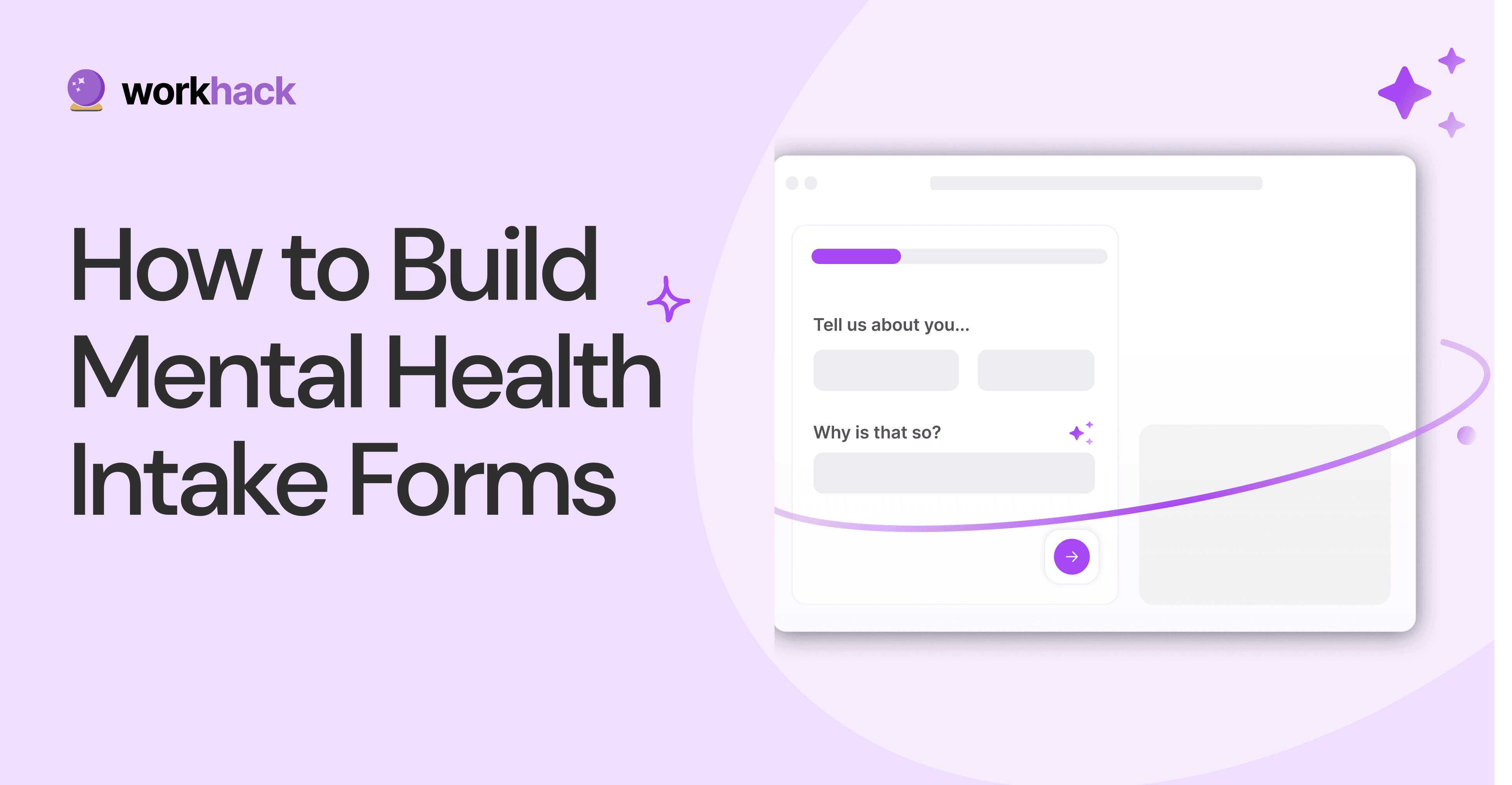
How to Build Mental Health Intake Forms?
Mental health intake forms are not like patient intake forms. Mental health intake forms deal with far more sensitive data and have specific design methods.
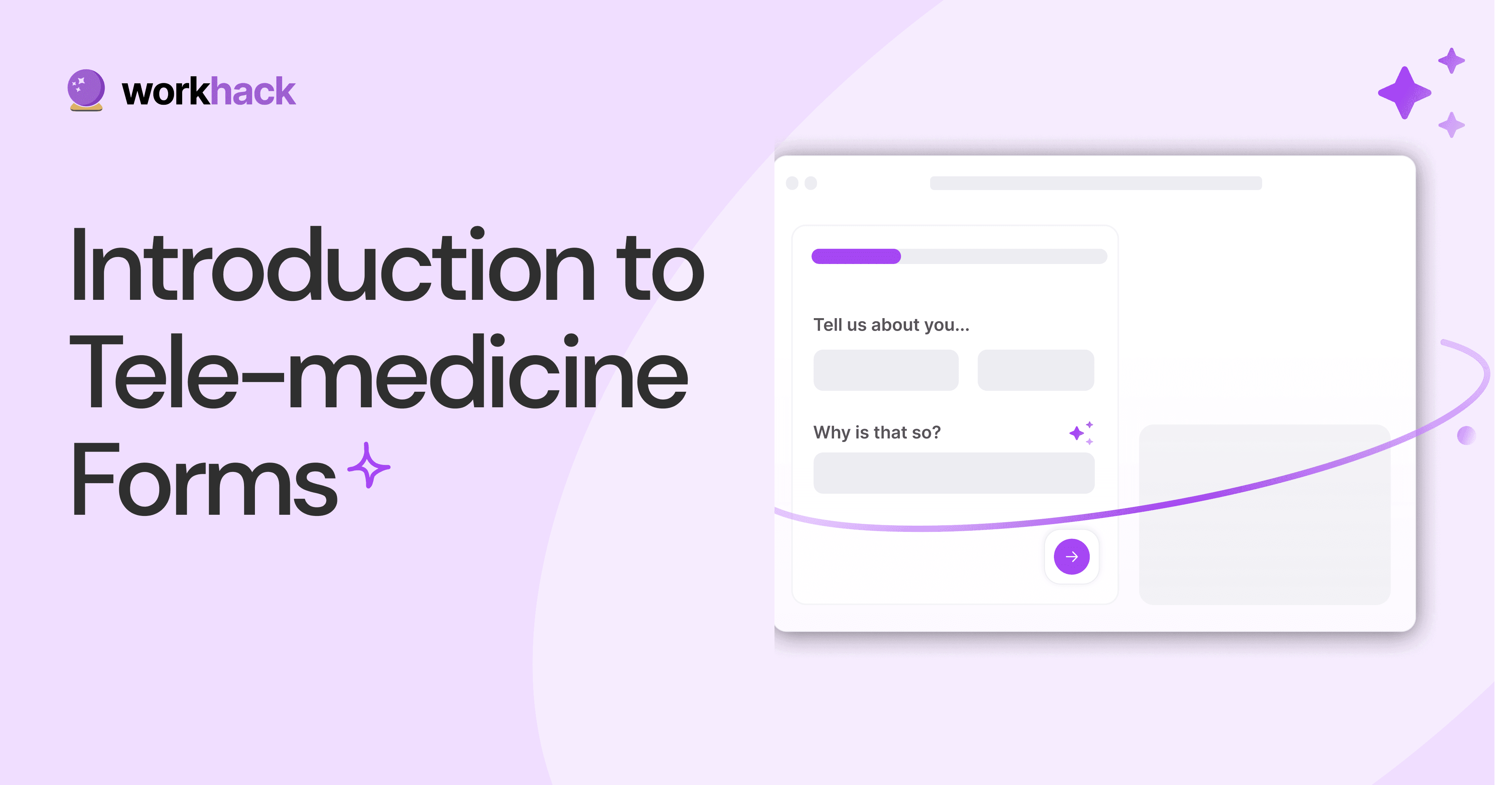
What, Why and How of Telemedicine Forms.
Telemedicine is on the rise and with different form builders out there, which one best suits your needs as a healthcare services provider?
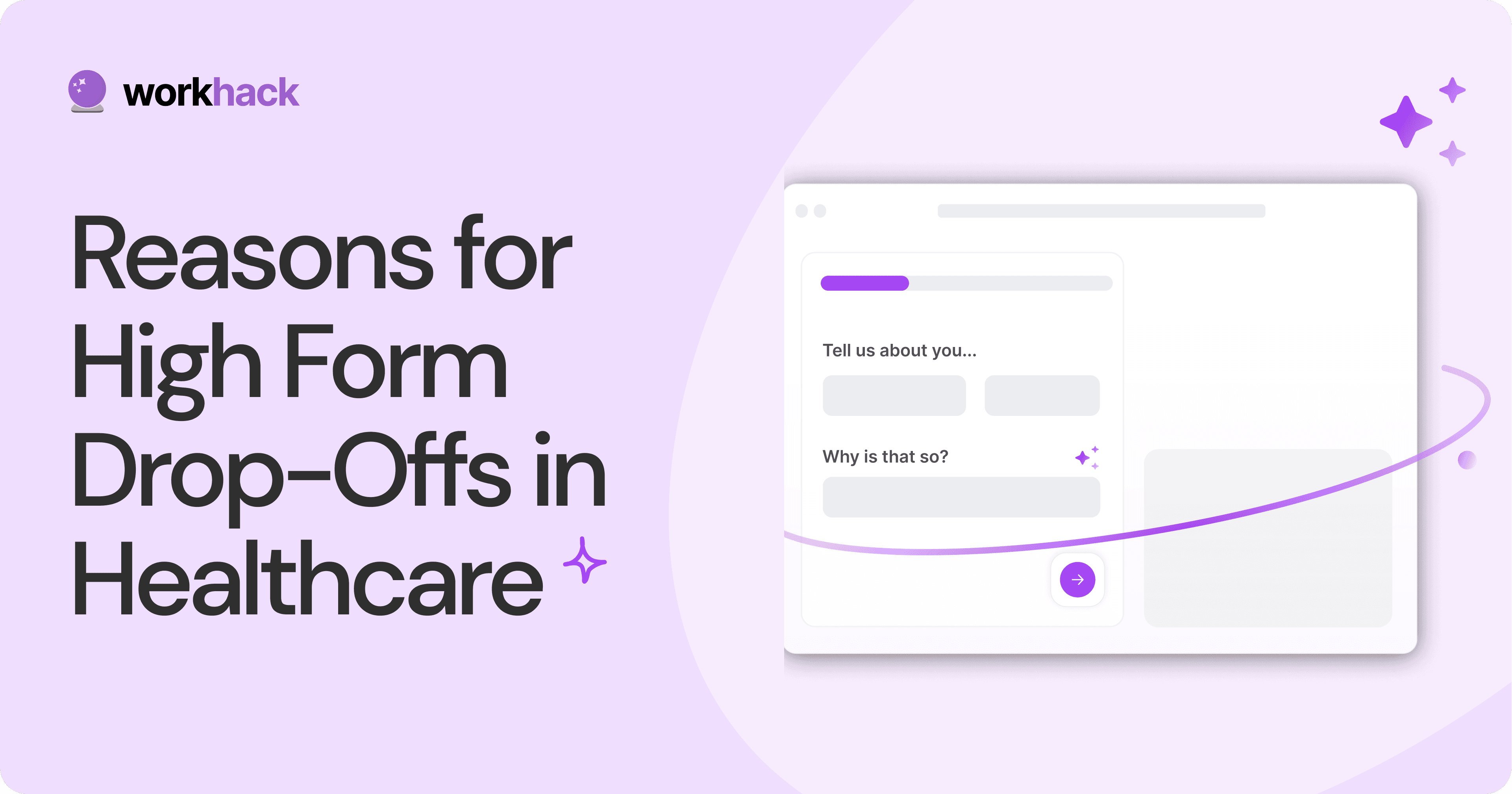
3 Reasons for Major Drop-Offs in Medical Forms.
No matter which healthcare form we pick, there are major drop-off reasons. We shall dive into the top 3 and learn how to resolve them in your next form.
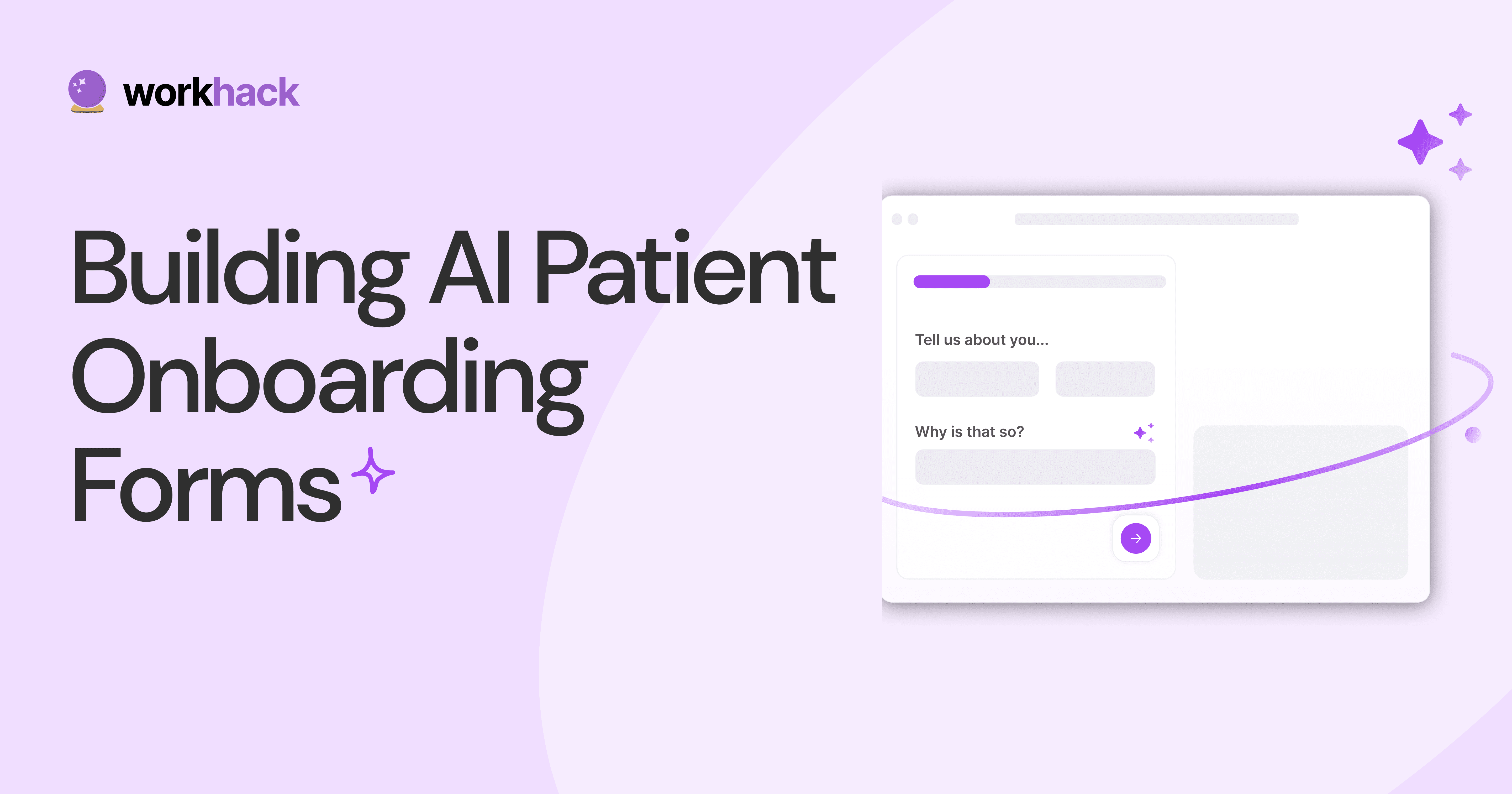
Patient Onboarding Forms - From Click to Clinic.
Patient onboarding forms are the first touchpoint for patients; getting this right for higher conversion rates is a must-have. Learn how to perfect them now.
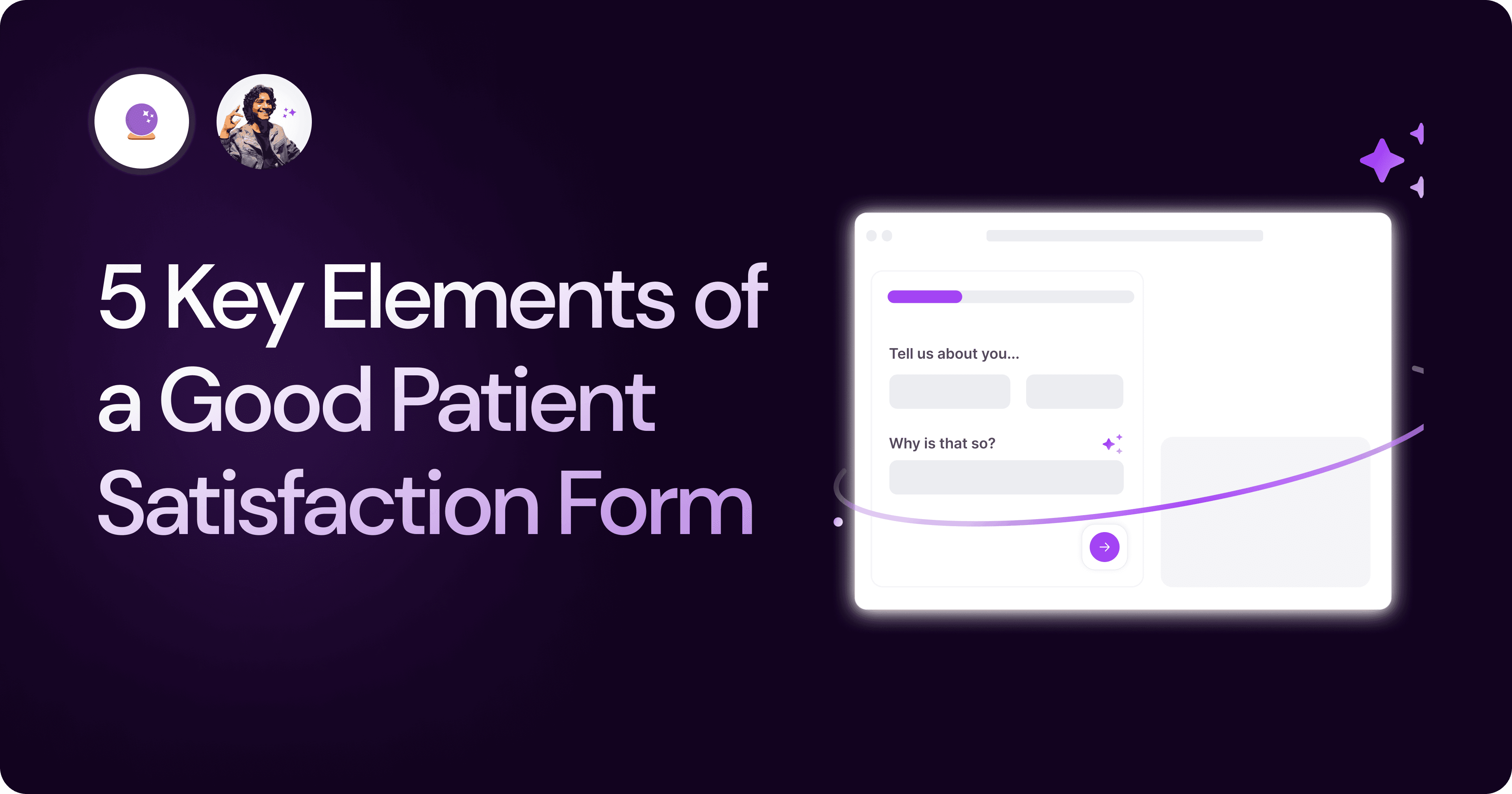
5 Key Parts of a Good Patient Satisfaction Form.
The goal of patient satisfaction surveys is to course-correct the services of a healthcare provider. Patient feedback leads to a culture of patient-centric care.

Build Quick and Easy Medical Release Forms.
Every HIPAA-compliant healthcare provider comes across medical release forms that involve details from medical history forms. Can they be shipped fast? Yes.

Nine Types of Healthcare and Medical Forms.
Medical forms are a must-have for any healthcare business or practitioner. Learn about the different kinds of medical and healthcare forms.

4 Tips for Better Medical History Forms.
Medical history forms are central to patient care, onboarding, and medical administration records. Learn how to make them easier to fill.

How to Build Mental Health Intake Forms?
Mental health intake forms are not like patient intake forms. Mental health intake forms deal with far more sensitive data and have specific design methods.

What, Why and How of Telemedicine Forms.
Telemedicine is on the rise and with different form builders out there, which one best suits your needs as a healthcare services provider?

3 Reasons for Major Drop-Offs in Medical Forms.
No matter which healthcare form we pick, there are major drop-off reasons. We shall dive into the top 3 and learn how to resolve them in your next form.

Patient Onboarding Forms - From Click to Clinic.
Patient onboarding forms are the first touchpoint for patients; getting this right for higher conversion rates is a must-have. Learn how to perfect them now.

5 Key Parts of a Good Patient Satisfaction Form.
The goal of patient satisfaction surveys is to course-correct the services of a healthcare provider. Patient feedback leads to a culture of patient-centric care.

Build Quick and Easy Medical Release Forms.
Every HIPAA-compliant healthcare provider comes across medical release forms that involve details from medical history forms. Can they be shipped fast? Yes.

Nine Types of Healthcare and Medical Forms.
Medical forms are a must-have for any healthcare business or practitioner. Learn about the different kinds of medical and healthcare forms.

4 Tips for Better Medical History Forms.
Medical history forms are central to patient care, onboarding, and medical administration records. Learn how to make them easier to fill.

How to Build Mental Health Intake Forms?
Mental health intake forms are not like patient intake forms. Mental health intake forms deal with far more sensitive data and have specific design methods.

What, Why and How of Telemedicine Forms.
Telemedicine is on the rise and with different form builders out there, which one best suits your needs as a healthcare services provider?

3 Reasons for Major Drop-Offs in Medical Forms.
No matter which healthcare form we pick, there are major drop-off reasons. We shall dive into the top 3 and learn how to resolve them in your next form.

Patient Onboarding Forms - From Click to Clinic.
Patient onboarding forms are the first touchpoint for patients; getting this right for higher conversion rates is a must-have. Learn how to perfect them now.

5 Key Parts of a Good Patient Satisfaction Form.
The goal of patient satisfaction surveys is to course-correct the services of a healthcare provider. Patient feedback leads to a culture of patient-centric care.

Build Quick and Easy Medical Release Forms.
Every HIPAA-compliant healthcare provider comes across medical release forms that involve details from medical history forms. Can they be shipped fast? Yes.

Nine Types of Healthcare and Medical Forms.
Medical forms are a must-have for any healthcare business or practitioner. Learn about the different kinds of medical and healthcare forms.

4 Tips for Better Medical History Forms.
Medical history forms are central to patient care, onboarding, and medical administration records. Learn how to make them easier to fill.

How to Build Mental Health Intake Forms?
Mental health intake forms are not like patient intake forms. Mental health intake forms deal with far more sensitive data and have specific design methods.

What, Why and How of Telemedicine Forms.
Telemedicine is on the rise and with different form builders out there, which one best suits your needs as a healthcare services provider?

3 Reasons for Major Drop-Offs in Medical Forms.
No matter which healthcare form we pick, there are major drop-off reasons. We shall dive into the top 3 and learn how to resolve them in your next form.

Patient Onboarding Forms - From Click to Clinic.
Patient onboarding forms are the first touchpoint for patients; getting this right for higher conversion rates is a must-have. Learn how to perfect them now.

5 Key Parts of a Good Patient Satisfaction Form.
The goal of patient satisfaction surveys is to course-correct the services of a healthcare provider. Patient feedback leads to a culture of patient-centric care.

Build Quick and Easy Medical Release Forms.
Every HIPAA-compliant healthcare provider comes across medical release forms that involve details from medical history forms. Can they be shipped fast? Yes.
Subscribe to stay updated.
Subscribe to stay updated.
Subscribe to stay updated.
HC

HC

HC

HC

70+ people from across industries read our emails.
HC

HC

70+ people from across industries read our emails.
HC

HC

HC

70+ people from across industries read our emails.




Bangalore, India / San Francisco, US
WorkHack Inc. 2023
Bangalore, India
San Francisco, US
WorkHack Inc. 2023
WorkHack Inc. 2023
Bangalore, India / San Francisco, US
WorkHack Inc. 2023
Bangalore, India / San Francisco, US




